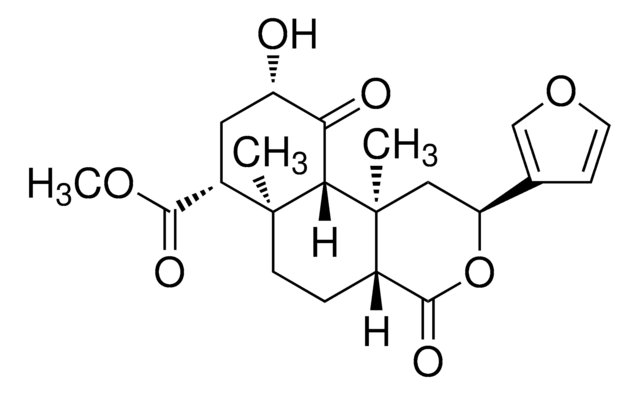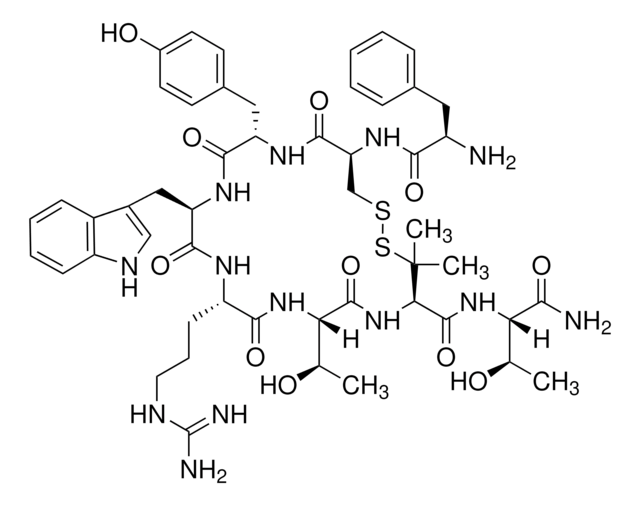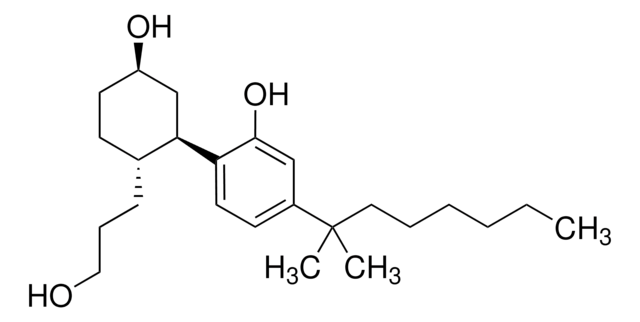Kluczowe dokumenty
U103
U-69593
solid
Synonim(y):
(+)-(5α,7α,8β)-N-Methyl-N-[7-(1-pyrrolidinyl)-1-oxaspiro[4.5]dec-8-yl]-benzeneacetamide, U69593
About This Item
Polecane produkty
Formularz
solid
Poziom jakości
aktywność optyczna
[α]/D +7.8°, c = 0.825 in methanol(lit.)
kolor
white
rozpuszczalność
45% (w/v) aq 2-hydroxypropyl-β-cyclodextrin: 10 mg/mL
0.1 M HCl: >40 mg/mL
ethanol: >40 mg/mL
0.1 M NaOH: insoluble
H2O: insoluble
temp. przechowywania
2-8°C
ciąg SMILES
CN([C@H]1CC[C@@]2(CCCO2)C[C@@H]1N3CCCC3)C(=O)Cc4ccccc4
InChI
1S/C22H32N2O2/c1-23(21(25)16-18-8-3-2-4-9-18)19-10-12-22(11-7-15-26-22)17-20(19)24-13-5-6-14-24/h2-4,8-9,19-20H,5-7,10-17H2,1H3/t19-,20-,22-/m0/s1
Klucz InChI
PGZRDDYTKFZSFR-ONTIZHBOSA-N
informacje o genach
human ... OPRD1(4985) , OPRK1(4986) , OPRM1(4988)
mouse ... Oprk1(18387)
rat ... Oprd1(24613) , Oprk1(29335) , Oprm1(25601)
Szukasz podobnych produktów? Odwiedź Przewodnik dotyczący porównywania produktów
Powiązane kategorie
Działania biochem./fizjol.
Cechy i korzyści
Uwaga dotycząca przygotowania
Kod klasy składowania
11 - Combustible Solids
Klasa zagrożenia wodnego (WGK)
WGK 3
Temperatura zapłonu (°F)
Not applicable
Temperatura zapłonu (°C)
Not applicable
Środki ochrony indywidualnej
Eyeshields, Gloves, type N95 (US)
Wybierz jedną z najnowszych wersji:
Masz już ten produkt?
Dokumenty związane z niedawno zakupionymi produktami zostały zamieszczone w Bibliotece dokumentów.
Klienci oglądali również te produkty
Nasz zespół naukowców ma doświadczenie we wszystkich obszarach badań, w tym w naukach przyrodniczych, materiałoznawstwie, syntezie chemicznej, chromatografii, analityce i wielu innych dziedzinach.
Skontaktuj się z zespołem ds. pomocy technicznej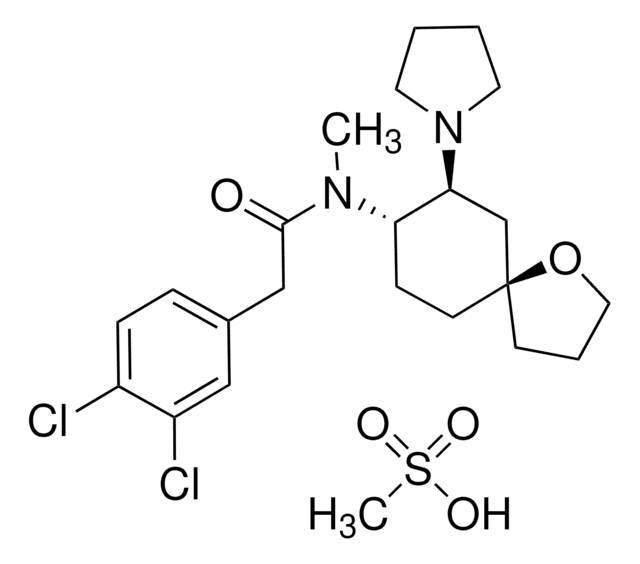
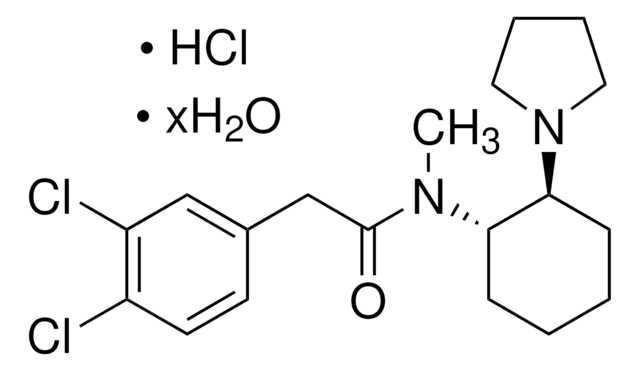
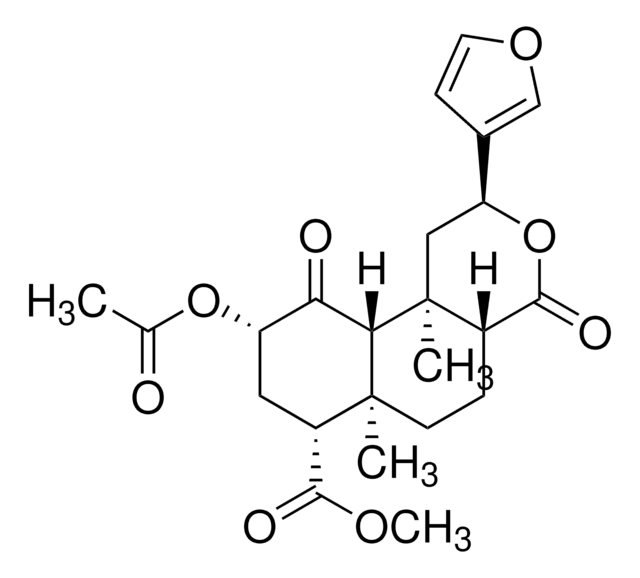
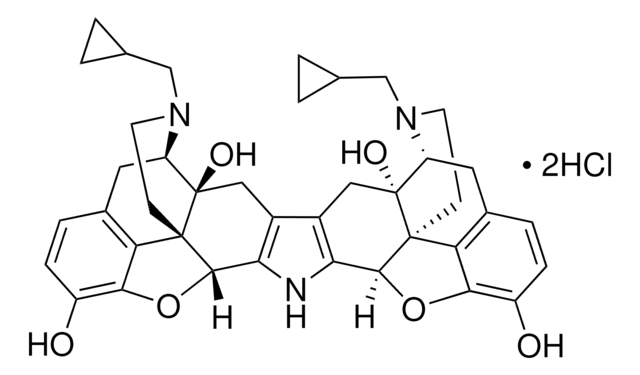
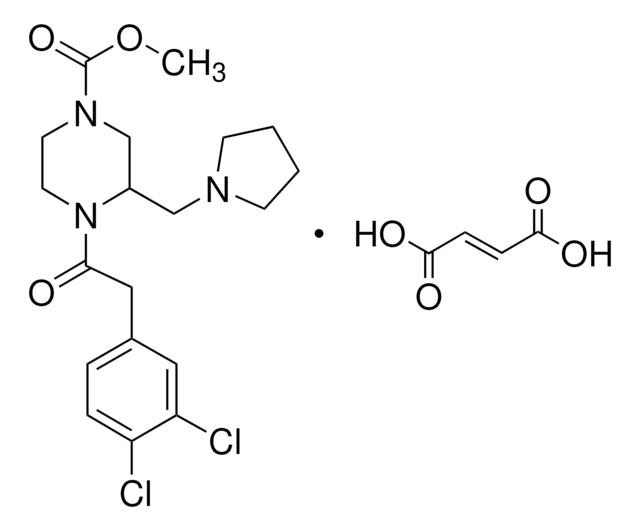

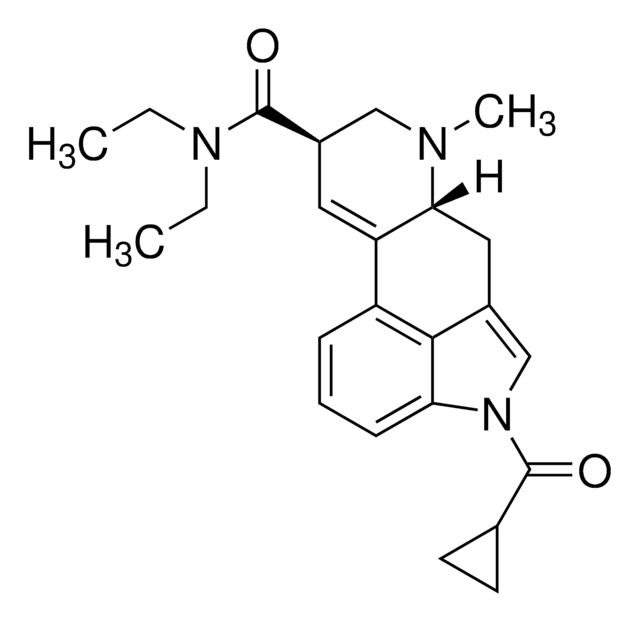

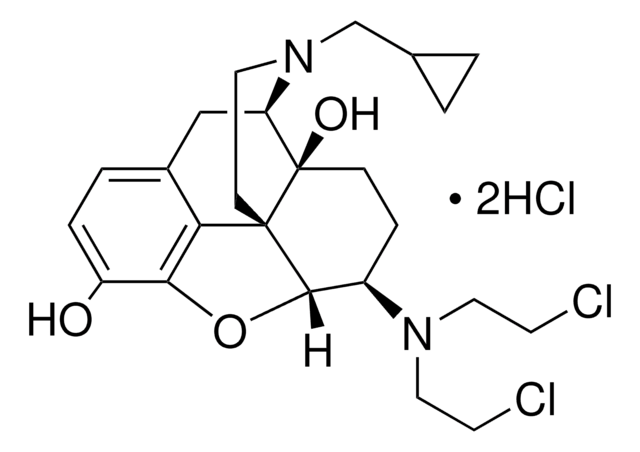
![[D-Pen2,5]-Enkephalin hydrate ≥95% (HPLC)](/deepweb/assets/sigmaaldrich/product/structures/184/136/1e0e1352-7665-406c-b51c-9a4fd9474b9a/640/1e0e1352-7665-406c-b51c-9a4fd9474b9a.png)
